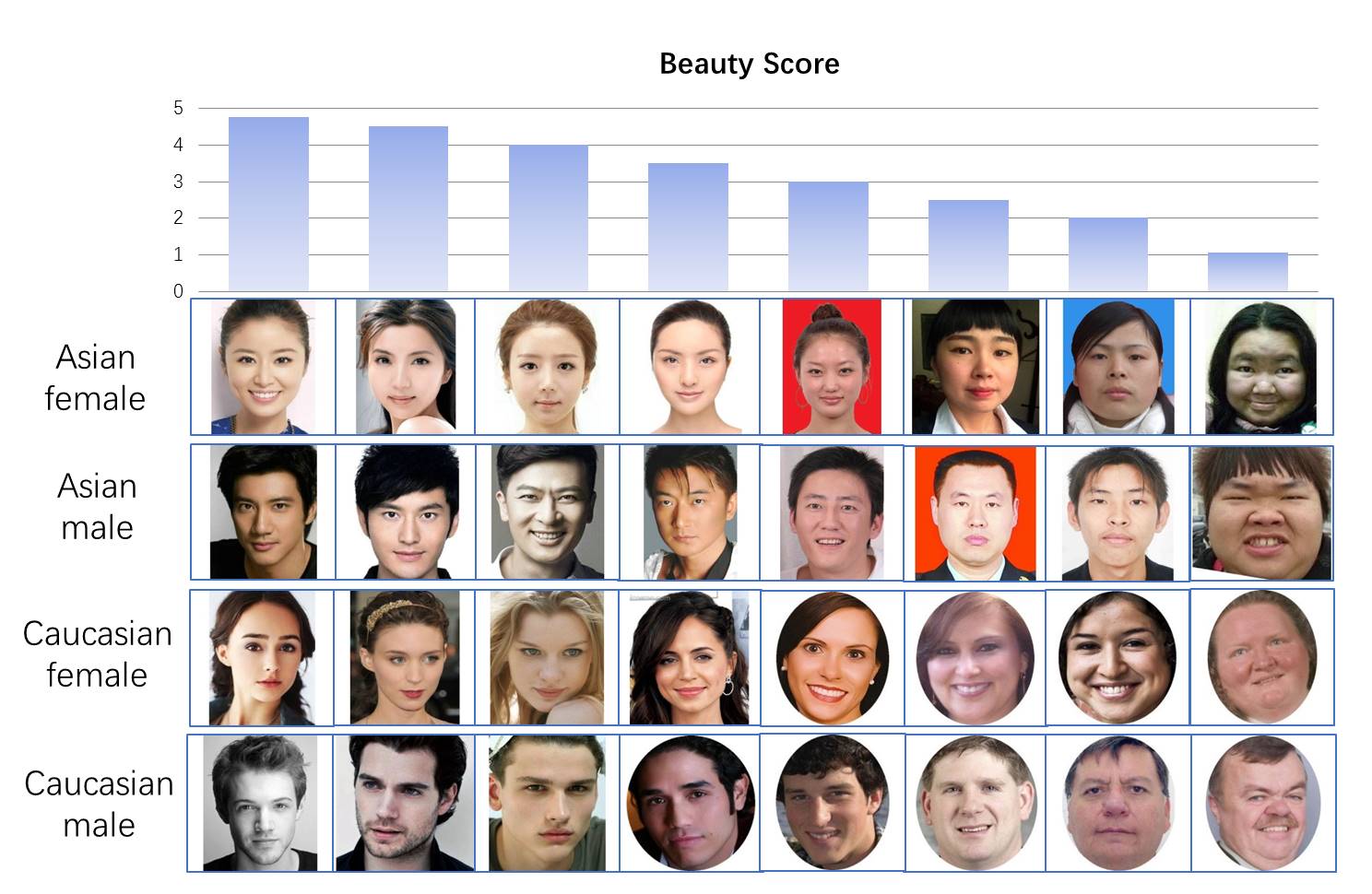SCUT-FBP5500: A Diverse Benchmark Dataset for Multi-Paradigm Facial Beauty Prediction
Facial beauty prediction (FBP) is a significant visual recognition problem to make assessment of facial attractiveness that is consistent to human perception. To tackle this problem, various data-driven models, especially state-of-the-art deep learning techniques, were introduced, and benchmark dataset become one of the essential elements to achieve FBP. Previous works have formulated the recognition of facial beauty as a specific supervised learning problem of classification, regression or ranking, which indicates that FBP is intrinsically a computation problem with multiple paradigms. However, most of FBP benchmark datasets were built under specific computation constrains, which limits the performance and flexibility of the computational model trained on the dataset. In this paper, we argue that FBP is a multi-paradigm computation problem, and propose a new diverse benchmark dataset, called SCUT-FBP5500, to achieve multi-paradigm facial beauty prediction. The SCUT-FBP5500 dataset has totally 5500 frontal faces with diverse properties (male/female, Asian/Caucasian, ages) and diverse labels (face landmarks, beauty scores within [1,~5], beauty score distribution), which allows different computational models with different FBP paradigms, such as appearance-based/shape-based facial beauty classification/regression model for male/female of Asian/Caucasian. We evaluated the SCUT-FBP5500 dataset for FBP using different combinations of feature and predictor, and various deep learning methods. The results indicates the improvement of FBP and the potential applications based on the SCUT-FBP5500.
PDF Abstract





